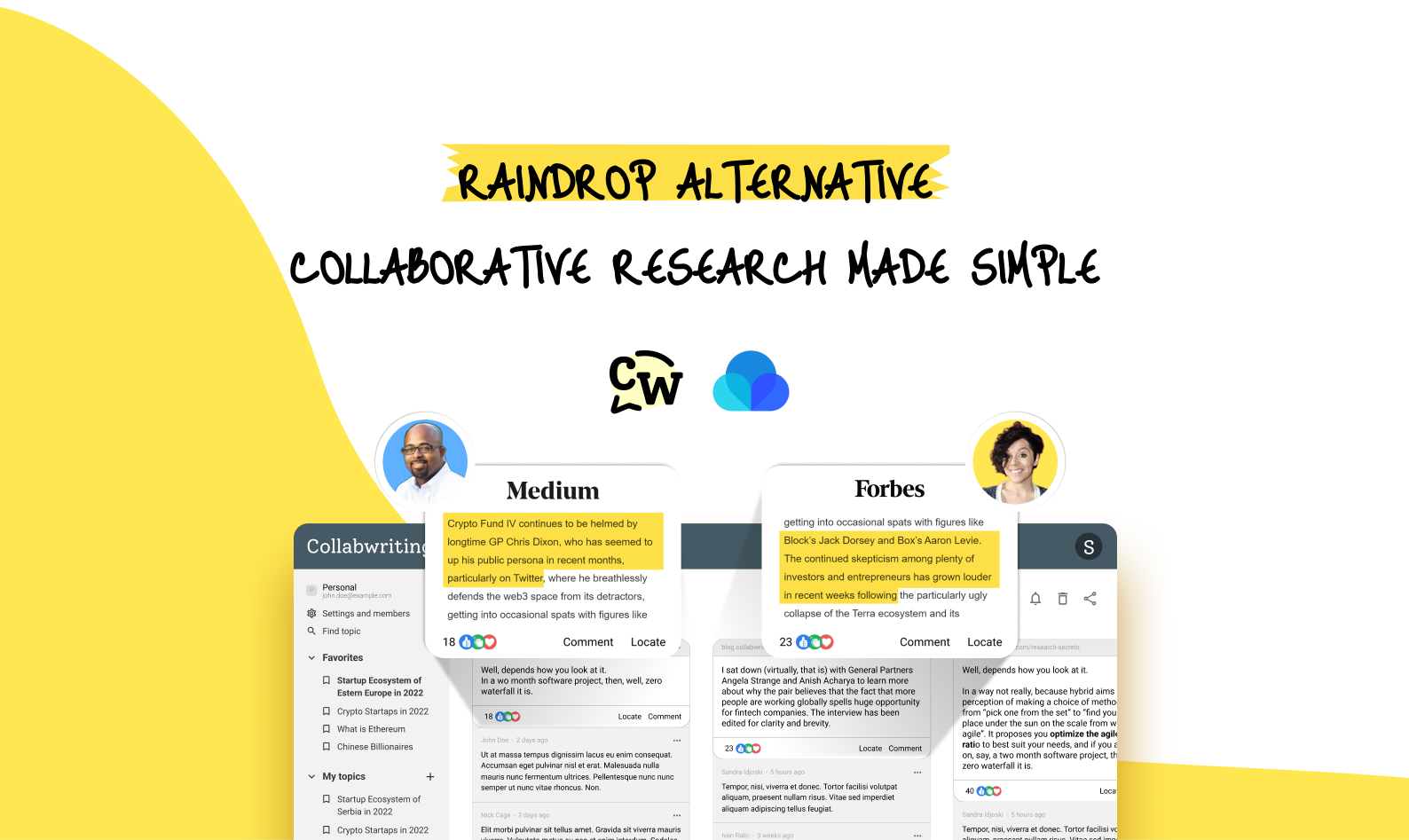In the last blog, we explained in detail what primary research is, its dimensions, and what’s the best way to approach it.
In short, there are two important dimensions of the research process we can do before (or sometimes while) creating content:
The Primary – Secondary dimension refers to who has collected the data that we’re looking into.
- Primary research is a type of research that requires the researcher to participate directly in the data-gathering process. They don't depend on already existing data, rather they collect first-hand information that helps with decision-making or further research steps.
exists - Secondary research relies solely on existing research materials rather than gathering data directly. This research approach is less expensive and more time-efficient, compared to primary research.
In general, you can retrieve data for secondary research online by searching archives, libraries, educational institutions, and organizational reports. However, extra care must be taken to ensure that the data is valid, as this can affect the research process and results.
The Internal – External dimension refers to where we’re gathering the data from.
The Internal - External dimension is often interpreted in the sense of whether research should be conducted internally or by external experts. However, that is not what we mean. Our focus here is on the source of the data, whether it comes from within the organization (internal) or from outside (external).
Here we want to highlight the importance and value of looking inwards too.
● Do you have internal experts on the subjects you want to write about?
● Has anyone from your team worked in other companies in the industry and can share more about strong points you can highlight in your content?
● Are there any gaps the team sees between what you’re communicating externally and what your product/service is?
These are all unique pieces of information that cannot be found anywhere else by anyone with an internet connection. They provide your content with that additional layer of authenticity and value it needs to stand out.
External - secondary research
External secondary research refers to looking into all the data that are already collected and exists outside of your organization.
This is the category where online research falls and while your first instinct is to look straight at what your competitors are publishing on their blogs and pages, there are other things to look at too.
Recently published research on relevant topics
We all know how persuasive numbers and data can be when it comes to getting your point across.
And we all know how hard it is to find the right numbers. While we cannot always dig deep and run complex experiments ourselves, we can observe what's happening in the industry.
Google Scholar is a good place to start when looking for recently published articles. Even if the publication is embargoed, in most cases researchers are willing to share at least some of the findings with you if you contact them directly.
In addition, there are several other resources that you may find useful such as Microsoft Academic, ResearchGate, CORE, Semantic Scholar, etc.
Industry reports
These are often published by industry leaders but don't neglect other sources that can provide a better understanding of the topic.
Reports published by niche-specific news outlets are relatively common and easily accessible.
These are often more comprehensive and objective, providing detailed information about competitors, growth rates, and new trends to watch for in the future.
Depending on the industry, non-governmental organizations and trade associations can also be good sources of data.
PMI, for example, publishes reports regularly and their yearly report can be a great starting point for producing relevant, up-to-date content in the project management space.
Reading popular books in the industry (or just the reviews)
While reading some industry-specific books may seem like a big commitment, it can give you tremendous insight into what is being said in the industry and what people are willing to pay for.
If that's too time-consuming for you, at least take a look at the top 5 most popular books. Read the summaries and discover the similarities.
Also, look at the reviews and comments and see why readers liked or disliked them. There's no more direct way to learn what people like and why than to read their personal opinions.
Audiobooks are increasingly replacing the old-fashioned way of reading.If you prefer to be informed in audio form, then it wouldn’t be a bad idea to use this method of education as well.
New topics talked about at conferences and industry events
Conferences are often attended for networking, but they're also a place to exchange ideas.
Even if you don't attend, check out their website and see what hot topics are being talked about and who the keynote speakers are (you might even follow them on LinkedIn or YouTube).
That way, you'll get new ideas and stay on top of what's happening in the industry.
Reviews of competitors’ products/services
Although we all think we should never undervalue the feedback we receive on our own product or service, we often overlook an important factor.
We're not the only ones who receive feedback.
Whether it's Google reviews, opinions on Facebook or a blog post of our own people like to share what they think about things. Take a look at what's being shared about your competition - good or bad. This is an amazing resource for you that, if you take it seriously, can save you a lot of trouble.
Why not highlight the positives of your product that you see people are missing somewhere else?
So, does market research work?
Absolutely yes!
Market research can significantly support your marketing strategy by providing important insights and information for your business.
It can provide a deeper understanding of your customers and competitors. It can help you understand who is buying your product or service, who is not buying your product or service, what motivates customers, and whether they are loyal to your brand - ultimately leading to increased sales over time.
Additionally, understanding the broader market environment can help your business identify new opportunities. With changing consumer preferences or market dynamics, it's imperative to continue researching and understanding ways to improve your offerings.
While many factors contributed to Nokia falling so spectacularly out of favor in the electronics market, the company ultimately failed to research and understand the everchanging market trends. They were late to market with product innovations while their competitors, consumer preferences, and technology rapidly evolved. Others like Samsung, Sony, and Apple iPhone followed suit and quickly became some of the leading electronics brands in the world.

Research secrets - How to win at SEO without cheap hacks
Learn how we outsmarted big competitors on Google, grew our audience with SEO, and became leaders in the 150 billion dollar Project Management niche - all without cheap hacks.
Conclusion
To develop a successful marketing strategy, market research is essential. With it, you can gain a comprehensive understanding of your business and the market. You can learn how customers and potential customers view your business and identify any gaps in expectations.
Effective market research minimizes risks when making important business decisions. It simply has too many benefits to ignore.





![The Best Tool for Collaborative Research in Content Marketing Teams [2026]](/content/images/2025/12/image--5-.png)

![5 Tools Marketers Use to Organize Research - Compared [2026]](/content/images/2025/11/cover-4-1.png)

![Build Credibility in Research: Smart Way to Verify Information and Track Sources Easily [2025]](/content/images/2025/10/covers-for-blog--7--1.png)

![How Marketers Can Turn LinkedIn Content into Collaborative Research [2025]](/content/images/2025/10/covers-for-blog--8-.png)
![Best Readwise Alternative for Personal & Team Research [2026]](/content/images/2025/09/Frame-814--3-.png)

